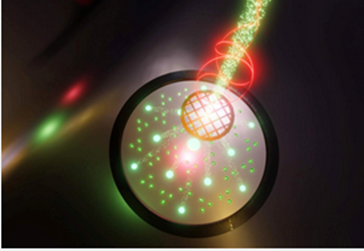
Crystal Structures in Super Slow Motion
Physicists from Göttingen claim that they are the first to succeed in filming a phase transition with extremely high spatial and temporal resolution. The use of laser beams to precisely change material properties is widely used in such technologies as rewritable DVDs. Yet, the underlying processes take place at unimaginably fast speeds and at such a small scale that until now they have eluded direct observation.
Researchers from the University of Göttingen and the Max Planck Institute (MPI) for Biophysical Chemistry in Göttingen managed to film, for the first time, the laser transformation of a crystal structure with nanometer resolution in slow motion, in an electron microscope. The results have been published in the journal Science.
The team took advantage of an unusual property of a material made up of atomically thin layers of Sulphur and Tantalum atoms. At room temperature, the crystal structure is distorted into tiny wavelike shapes forming a charge-density wave. At higher temperatures, a phase transition occurs where original microscopic waves suddenly disappear and electrical conductivity changes drastically.
The researchers induced this phase transition with short laser pulses and recorded a film of the charge-density wave reaction. They observed the rapid formation and growth of tiny regions where the material switched to the next phase. The experiment relies on a newly developed imaging technique that is sensitive to the specific changes observed in this phase transition. The Göttingen physicists use it to take images composed exclusively of electrons scattered by the crystal’s waviness.
Researchers gained fundamental insights into light-induced structural changes. The process answers fundamental questions in solid-state physics and opens up new perspectives for optically switchable materials in future intelligent nano-electronics.
